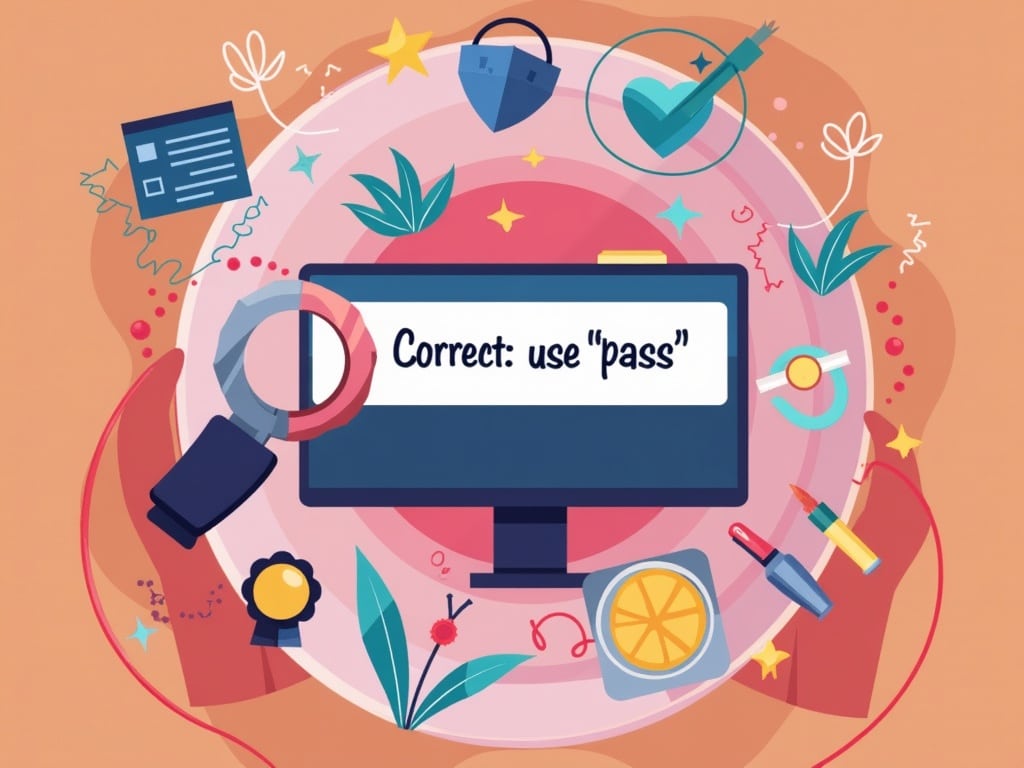Decoding ‘IndentationError: expected an indented block’ in Python
Imagine staring at your Python code, confident in its logic, only to be slapped in the face by a cryptic error message: IndentationError: expected an indented block. Don’t panic! This is one of the most common (and often frustrating) errors that new Python programmers encounter. This error isn’t a sign of your coding incompetence; it’s Python’s way of enforcing its strict (but ultimately beneficial) indentation rules. This article will dissect this error, explain why it occurs, and equip you with the knowledge to squash it every time.
Understanding Python’s Indentation Philosophy
Unlike many other programming languages that use curly braces {} or keywords like begin and end to define code blocks, Python relies solely on indentation. Indentation, in Python, isn’t just for readability; it’s part of the syntax. A consistent level of indentation tells the Python interpreter which statements belong to which block of code (e.g., inside a loop, within a function, or part of a conditional statement).
Think of it like outlining a document. You use indentation to show that a point is subordinate to a higher-level heading. Python code functions similarly. If you incorrectly indent your code, Python gets confused and throws the IndentationError: expected an indented block error.
Why Does This Error Occur?
The IndentationError: expected an indented block error specifically means that Python was expecting a block of indented code after a statement that requires one (like an if, else, for, while, def, or class statement), but it didn’t find it. Let’s break down the most common scenarios:
1. Missing Indentation After a Control Flow Statement
This is the most frequent cause.
if x > 5:
print(x is greater than 5) # Error: Missing indentation
Python expects the code under the if statement to be indented. The correct code should look like this:
if x > 5:
print(x is greater than 5) # Correct: Indented
2. Incorrect Indentation Level
Sometimes, you *doindent, but the indentation level doesn’t match what Python expects.
def my_function():
print(Inside the function) # Error: Incorrect indentation level
The print statement needs to be indented relative to the def statement:
def my_function():
print(Inside the function) # Correct: Properly indented
3. Mixing Tabs and Spaces
This is a sneaky one! Python is very picky about consistency. You can use spaces *ortabs for indentation, but you *cannotmix them within the same file. Mixing tabs and spaces can lead to seemingly random IndentationError messages because Python interprets them differently.
While your editor might *displaytabs and spaces as the same width, Python sees them as distinct characters. This can cause misalignment and trigger the error.
4. Empty Blocks
In some cases, you might have a control flow statement but intend to have no code within its block (perhaps as a placeholder). Python doesn’t allow truly empty blocks. You need to use the pass statement as a placeholder.
if condition:
# Error: Empty block not allowed
# Correct: Use 'pass'
if condition:
pass
5. Accidental Indentation
Occasionally, you might accidentally insert spaces at the beginning of a line, causing unintended indentation.
print(This is the first line)
print(This line is incorrectly indented) # Error: Accidental indentation
How to Fix IndentationError: expected an indented block
Here’s a systematic approach to debugging this frustrating error:
1. Carefully Examine the Error Message and Line Number
The traceback will usually tell you the exact line where Python encountered the error. Start by focusing on that line and the lines immediately preceding it.
2. Check for Missing Indentation After Control Flow Statements
Ensure that every if, else, for, while, def, class, try, except, and finally statement is followed by an indented block of code.
3. Ensure Consistent Indentation Levels
Within a single block of code, all lines must be indented to the same level. Use your editor’s features to visually verify that the indentation is consistent.
4. Convert Tabs to Spaces (or Vice Versa)
This is crucial if you suspect a mix of tabs and spaces. Most code editors have a feature to convert tabs to spaces (or spaces to tabs). Configure your editor to use spaces for indentation (usually 4 spaces is the standard) and then convert all tabs to spaces.
In Visual Studio Code, for example, you can go to View -> Appearance -> Render Whitespace to visualize spaces and tabs. Then you can use the Convert Indentation to Spaces or Convert Indentation to Tabs options in the bottom right corner.
5. Use `pass` for Empty Blocks
If you have a control flow statement that intentionally has no code to execute, use the pass statement to create a valid, empty block.
6. Beware of Copy-Pasting Code
Copying code from websites or other sources can sometimes introduce inconsistent indentation (especially mixed tabs and spaces). Double-check the indentation of any pasted code.

Best Practices to Avoid Indentation Errors
Prevention is always better than cure. Here are some best practices to minimize indentation-related headaches:
1. Choose a Consistent Indentation Style and Stick to It
Decide whether you’ll use spaces or tabs (spaces are generally preferred) and consistently use that style throughout your project. Configure your code editor to automatically insert the correct number of spaces when you press the Tab key.
2. Use a Code Editor with Python Support
Modern code editors like Visual Studio Code, PyCharm, Sublime Text, and Atom have excellent Python support, including automatic indentation, syntax highlighting, and error checking. These features can catch indentation errors early on.
3. Enable Show Whitespace in Your Editor
Most editors have an option to visualize whitespace characters (spaces and tabs). This can help you quickly identify mixed indentation issues.
4. Use a Linter (e.g., Flake8, Pylint)
Linters are static analysis tools that automatically check your code for style issues, including indentation errors. Integrating a linter into your development workflow can help you maintain consistent code quality and catch errors before you even run your code. Flake8 is commonly used and easy to set up. Pylint is more comprehensive but can be more complex to configure.
5. Write Small, Focused Functions
Large functions with deeply nested code can be difficult to read and prone to indentation errors. Breaking down your code into smaller, more manageable functions can improve readability and reduce the likelihood of indentation problems. You can find a helpful guide to refactoring large functions on platforms like Stack Overflow, where experienced developers share insights and solutions for improving code structure and maintainability.
6. Practice, Practice, Practice!
The more you code in Python, the more familiar you’ll become with its indentation rules, and the less likely you are to make mistakes.
Example Scenario: Debugging a Real-World IndentationError
Let’s say you have the following code, which is intended to check if a number is positive, negative, or zero:
def check_number(number):
if number > 0:
print(Positive)
elif number < 0:
print(Negative)
else:
print(Zero)
check_number(10)
check_number(-5)
check_number(0)
If you run this code, you’ll likely get an IndentationError: expected an indented block error. Let’s analyze why:
The if, elif, and else statements are missing their indented blocks. The print statements should be indented relative to these control flow statements.
Here’s the corrected code:
def check_number(number):
if number > 0:
print(Positive)
elif number < 0:
print(Negative)
else:
print(Zero)
check_number(10)
check_number(-5)
check_number(0)
IndentationError: A Blessing in Disguise
While IndentationError: expected an indented block can be frustrating, it’s ultimately a valuable feature of Python that enforces code readability and structure. By understanding why this error occurs and adopting best practices, you can avoid it and write cleaner, more maintainable Python code. So, embrace the indentation, and let it guide you to writing beautiful and error-free programs!
